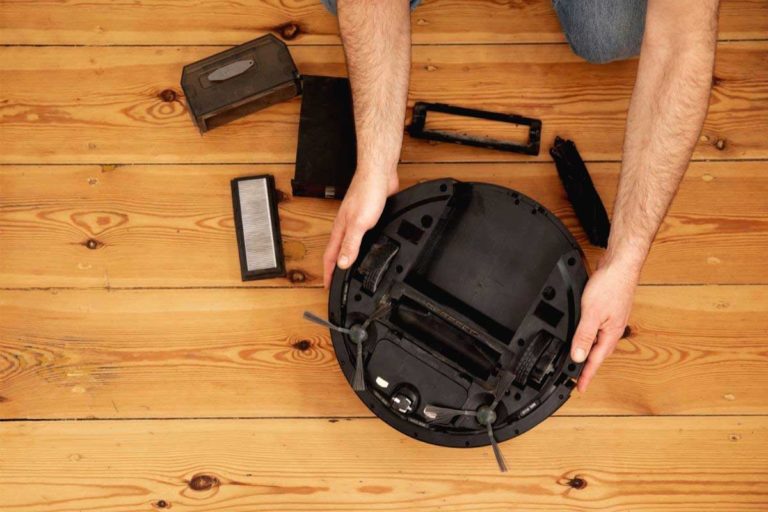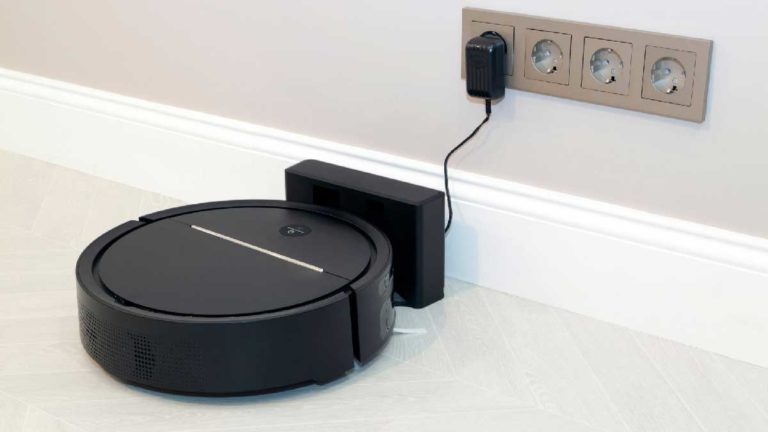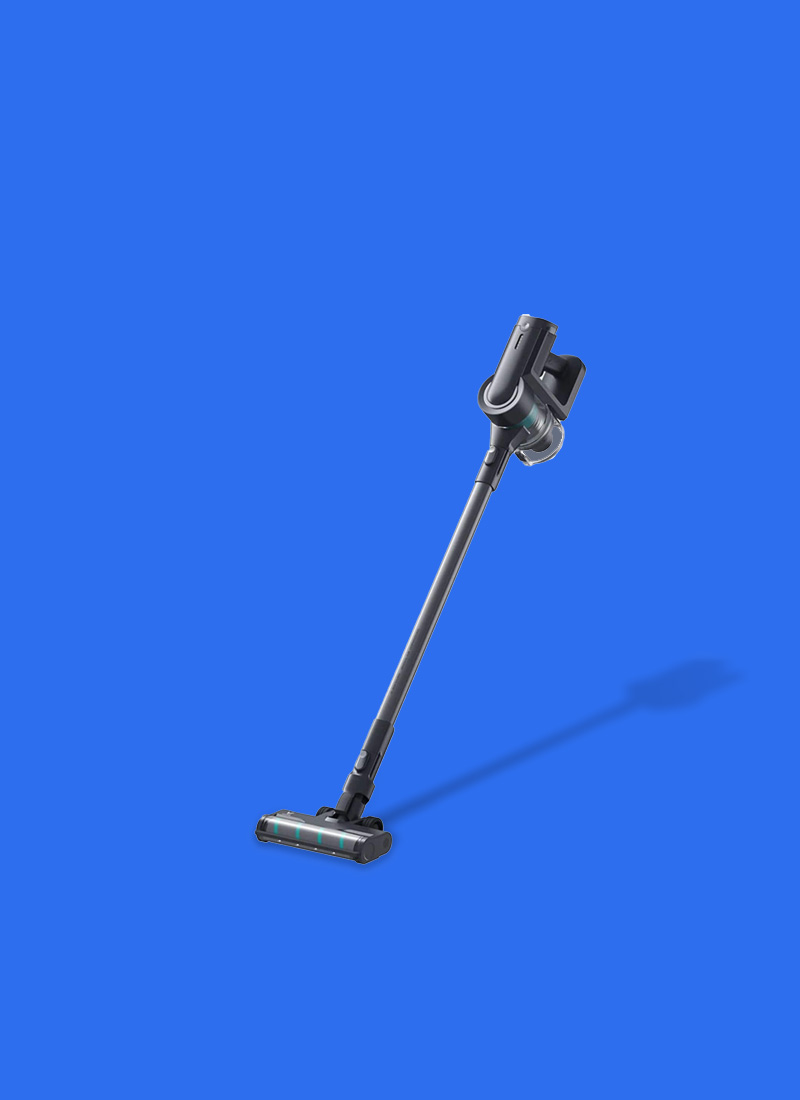ⓘ We are reader-supported and may earn a small commission at no additional cost to you if a purchase is made through one of our links.
Robotic vacuums are excellent companions to have around the house, and although they can’t fully replace a traditional vacuum. They can help you clean your home regularly while you’re away and they’re smart enough to keep a strict routine that you can set. They can even manage their cleaning areas without much help from you. But just like any other household appliance, they’re prone to wear and tear and need to be taken care of.
These devices have a lot of parts that need to be emptied out, cleaned, or even replaced. In this article, we’ll help you figure out how to clean and maintain your robotic vacuum cleaners so that they live a longer life and keep cleaning at their top potential. First thing’s first. Before you start cleaning the little guy, make sure that it’s completely powered down and try to avoid accidentally turning it on so you’re not shocked by a sharp beep or a sudden whir.
Empty Out The Machine’s Dustbin
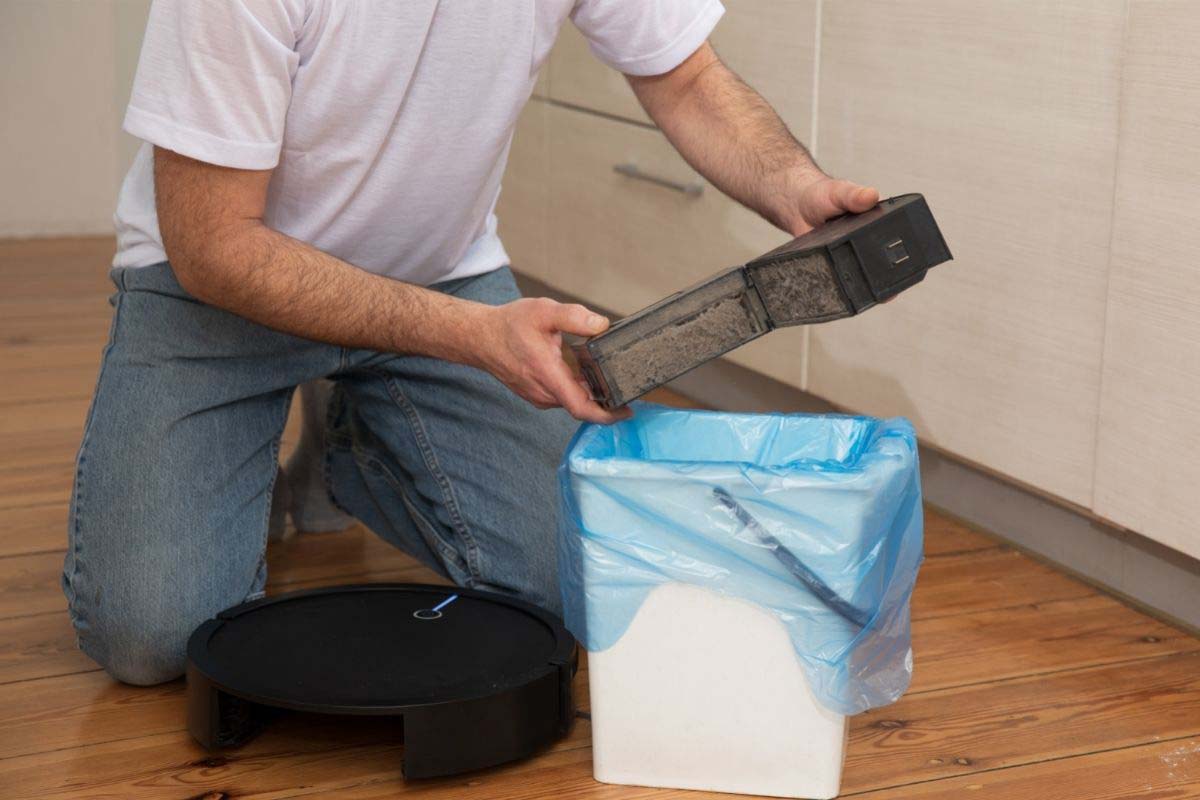
All robot vacuums have little dustbins that collect dirt, dust, and other small particles as the device zooms around your household. If this bin fills up, it could severely impact how well the robot cleans, which is why you should empty it out after every cleaning session regardless of whether or not it’s full or not. After all, it could fill up on its next trip, giving the machine a hard time while cleaning.
This is especially important for pet owners, as stray fur can cause the dustbin to fill up significantly more quickly and may require emptying our mid cleaning cycle. The dustbins can often be found towards the middle part of the machine or somewhere near the bottom of the undercarriage. Make sure you’re not holding the vacuum upside down when you release the dustbin, as you might end up spilling its contents on the ground.
Pull it out and throw out the contents in a garbage bag. Most models allow you to rinse the dustbin with water to make them easier to clean. However, if the bin has filters, ensure that they’re removed first. You’ll also want to run the anti-tangle comb under the tap as well, assuming your variant has one. Certain models include an automatic emptying feature whenever it docks, though you’ll still need to empty out the dock every now and then. On the plus side, you won’t have to clean out the dustbin as often.
If you’re thinking of buying a robotic vacuum don’t miss out our buyer’s guide here.
Keep The Roller Brushes Tidy
The function of roller brushes is to help usher dirt and dust into the machine’s dustbin. Fur, hair, and other materials tend to get tangled up in these brushes, making it difficult for the component to do its job. That’s why it’s so important to clean it out regularly. To start off, pull out the roller brush by first disengaging the brush guard. The brush may have a lot of debris caked onto it, so you might have to use scissors or a cutter to rip through the outer layer and pull off the debris. Just make sure to avoid damaging the brush itself.
If you think the brush needs a bit more cleaning, you can wipe down the component to get rid of any sticky messes that are latched onto the brush. When putting back the roller brush, there are usually guide arrows on the vacuum or brush that tell you which way it should be installed. Keep in mind that roller brushes need to be replaced every so often and most brands agree that this is usually around every 6 to 12 months.
Clean Out The Air Filters
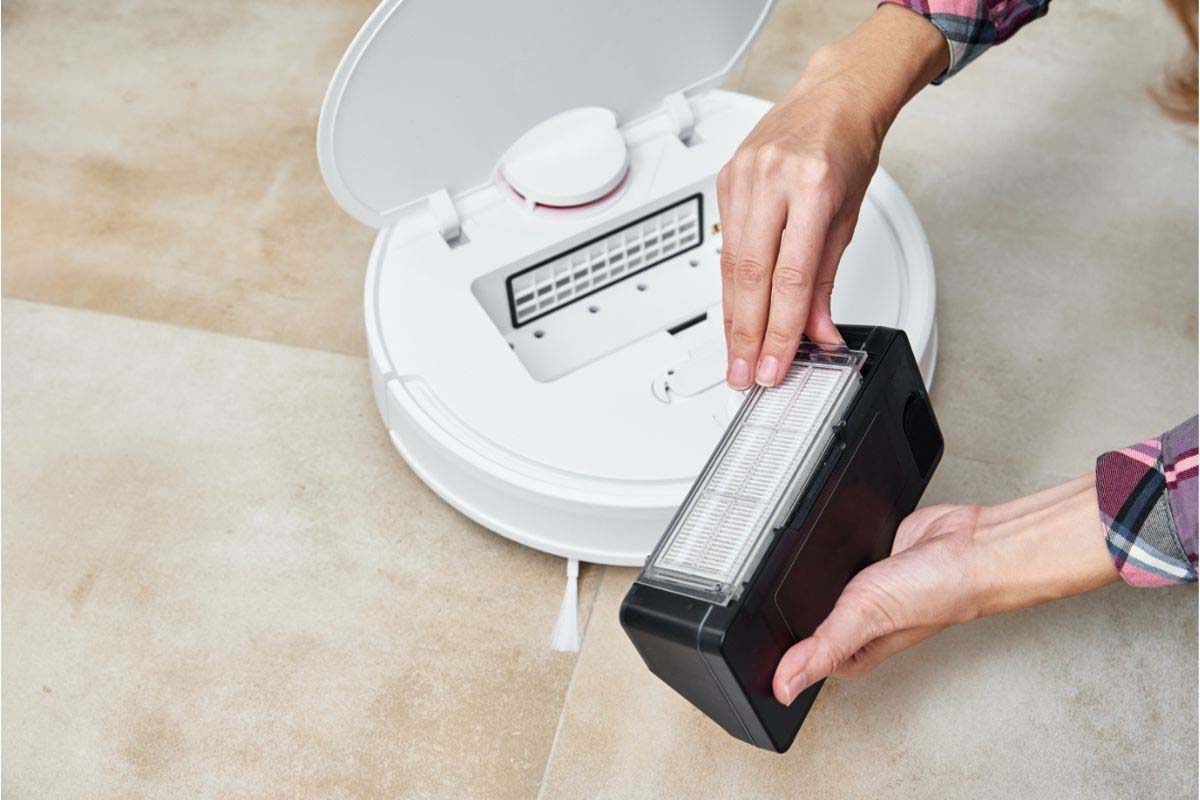
Air filters are usually attached to the robot vacuum’s dustbin and are there to trap finer particles as your machine sucks up dirt and other messes. They’re often made up of up to three different materials, allowing them to more effectively trap minute substances. Air filters are integral components that need to be cleaned out very regularly.
Depending on how messy your house gets, you should consider cleaning out the filters anywhere between once a week or after every cleaning session. To clean these parts out, remove the filters after pulling out and emptying out the dustbin, making sure that you do so over the trash in case dirt spills out. Give the filter a few good smacks on the side to ensure it’s emptied properly.
After that, you’ll want to use a brush to effectively clean out your filter and you can finish the process off with a good vacuuming. Most air filters are made out of paper, meaning they are not waterproof and should be immediately replaced if they get wet. However, certain variants sport washable filters, but you’ll still need to make sure they’re completely dried out before putting them back on. Read the manual to figure out if your robot’s air filters are washable or not.
Make Sure The Sensors Are Clear
Sensors are one of the most important aspects of robot vacuums, as they help your machine navigate its way through your home as it cleans. If you notice that your device is crashing into more obstacles than usual, then it might just be time for you to clean out the sensors. They’re usually found on the sides and along the underside of the vacuum, but you’ll want to check the manual to know exactly where they’re located.
Rubbing the sensors with a quality microfiber cloth is usually enough to get it back to tip-top shape, but you can dab the cloth in a bit of water for tougher spots. However, you’ll want to avoid cleaning solutions as they might damage the covering of the sensors.
Clean Out The Brushes On The Side

Robot vacuums are often equipped with one or two brushes located on their sides that rotate and usher dirt and other particles onto the pathway of its main roller brush. Wiping them down with a rag is usually enough for cleaning, but you can snap them off to remove tougher debris. If there are two side brushes, it’s a good idea to switch their places to prevent them from becoming too misshapen in a certain direction. Side brushes that are too worn out or bent will no longer function correctly and need to be swapped out for new ones.
Keep The Charging Ports Spick And Span
Clogged charging ports may make it tough for the vacuum to connect to the dock for charging and may lead to charging failures. To prevent this, make sure to clean out the ports on both the machine and the dock using a dry microfiber cloth.
Clear Out The Dirt From The Wheels
The wheels on the bottom of your robotic vacuum are essential to the movement of the device. While they generally don’t require all that much care, you should check on them every once in a while to make sure there isn’t an excessive build-up of dirt, grime, or other substances. You can pull out any stray hair or fair with a pair of tweezers and use a damp soft cloth for wiping down the wheels themselves.
Conclusion
Robotic vacuums have become increasingly more common nowadays and they’re incredibly handy to have at home. But they require a certain level of regular care to ensure that they run at their peak performance and stay functional for a long time. Make sure you follow the maintenance tips above to clean and maintain your robot vacuum effectively.

